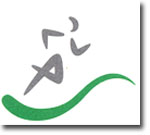


Osteoarthritis is the most common cause of musculoskeletal pain and disability in the knee joint. In the knee joint, the end of the femur (thigh bone) and tibia (shin bone) are covered in smooth articulate cartilage. Between the two bones sits a second type of cartilage, called menisci, which act as cartilage shock absorber pads. Joint fluid also adds lubrication to the knee joint.
Osteoarthritis (OA) starts as the lack or loss of this articulate (surface) cartilage and then progresses into involvement with the surrounding bone, tissues, and synovial fluid. In osteoarthritis, cartilage may have areas of partial thickness loss (thinning) or complete loss of surface cartilage resulting in areas of exposed bone. Isolated cartilage loss may be a result of isolated trauma or it may be a result of chronic wear and tear of the joint.
It has been estimated that 12% of Americans aged >25 years have clinical signs and symptoms of OA. Further studies have shown 80% of people older than 75 have symptoms of OA, and cadaveric studies have shown universal signs of arthritis in patients 65 and older. Studies have provided conflicting evidence regarding activities and the development of osteoarthritis. While moderate physical stress helps maintain the integrity of the surface cartilage, excessive stress may result in cartilage degradation. Risk factors for OA include age, injury, anatomic joint abnormalities, heredity, high bone mineral density, joint hypermobility, obesity, muscle weakness, and overuse or under use of the joints.
Osteoarthritis can be prevented by remaining fit and strong and remaining slim. Carrying less body weight translates to less pressure being placed on the joints and less wear over time. Muscles act as external shock absorbers to the joint. Improving the strength of leg muscles, especially the quadriceps, takes pressure off of the knee joint
Respecting pain and injury can also be helpful in preventing osteoarthritis. For example if a meniscal tear or ligament tear is left untreated it can lead to further damage to the knee joint.
Symptoms of osteoarthritis include joint pain with activity, night pain, morning stiffness, limited motion, joint inflammation, crepitus or noise from the knee, and deformity. Below are pictures of osteoarthritis in a knee joint.
There are several options in treating osteoarthritis, both surgical and nonsurgical. All options are not always appropriate for each patient. Information gained from X-rays, MRI and knee arthroscopy all are helpful in determining an appropriate treatment plan.